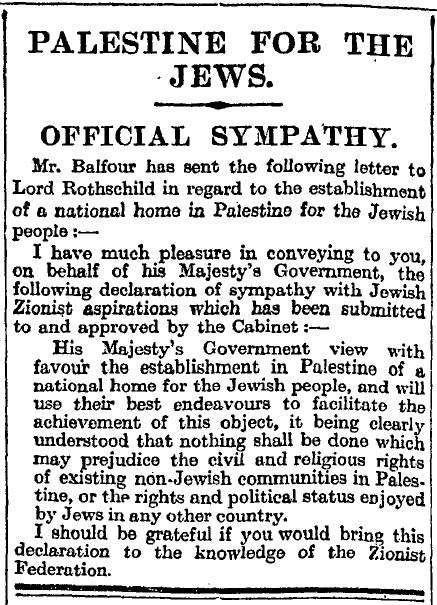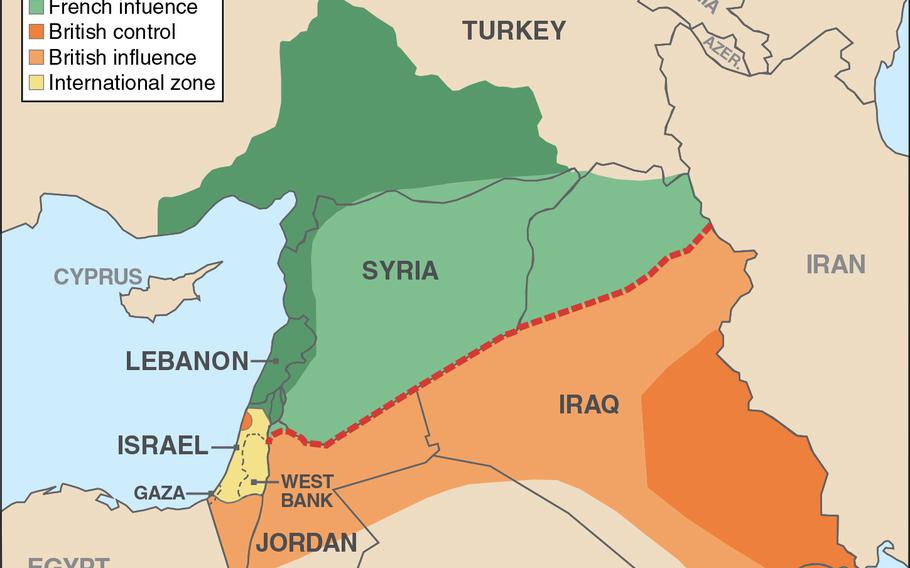Unfortunately, this is not an easy one to answer. For purposes of this article, I am referring to the area between the Jordan River and the Mediterranean Sea as the Holy Land. That includes Israel, the West Bank, and Gaza.
The Ottoman Empire. Prior to 1948, there had not been an independent state of either Israel or Palestine for over 2,000 years. This entire area was continuously ruled by foreign powers since the Romans took control of it in 63 BC. For almost 500 years prior to World War 1, the Holy Land was a province within the Ottoman Empire. The people who lived there were ruled by Turkish governors. The Ottomans were Muslims; but there were Christians, Jews, as well as Muslims living in the Holy Land. Most of the time, the Ottomans let each of these groups govern themselves, unless there was a dispute between the groups or a dispute that involved relations with a foreign country. At one time, the Ottoman Empire was the largest and most powerful empire in the world, but by the early 20th Century, the Ottoman Empire had become corrupt and weak. In 1914, the Ottoman Empire made a disastrously bad decision when they entered World War 1 as an ally of Germany. The Ottomans were crushed by the Allies. By the end of the war, the British army was in complete control of the Holy Land.
World War 1. The number of soldiers killed in this war was gigantic. Over 1 million British soldiers were killed in the war and another 2 million were seriously wounded. That doesn’t include soldiers from British commonwealth countries like Canada and Australia. The number of men killed in individual battles in the war seems unbelievable. For example, in 1916, on the first day of the Battle of the Somme, over 20,000 British soldiers were killed, and that was just on the first day. The Battle of the Somme went on for 5 months, and at the end of the battle, both sides were where they started. The British government was worried that they were going to run out of soldiers before the Germans, so they developed policies to get more allies.
The Holy Land Goes to the Arabs. Although the Ottoman Empire was weak, the bulk of the British army was in Europe fighting the Germans. If Britain was going to defeat the Ottomans, they needed a powerful ally in the Middle East. The only possible ally in the region strong enough to take on the Ottomans were the Arabs. The British convinced the Arabs to declare war on the Ottomans by promising to give them the Holy Land and Arabia after the war was over. Once the Arabs secured this promise, Sharif Hussein, the head of the Arab nationalists initiated the Great Arab Revolt in 1916 against the Ottoman Empire. They were very successful and drove the Ottomans out of the Holy Land. Thousands of Arabs were killed in this war. No one knows how many. The movie ‘Lawrence of Arabia’ is one of the few movies that deals with this war. It is a beautiful movie and well worth seeing, although there are many historical errors in the movie. Try to see it on the biggest screen you can.
The Holy Land Goes to the Jews. Another group that the British wanted to get to support their war effort were the Jews of Europe and the United States. At the beginning of the war, most Jews were pro-German. That wasn’t because Jews loved the Kaiser, but because they hated the Czar of Russia. In 1905, my grandparents Bores and Pauline Tarses left Odessa for America. Shortly after they left Ukraine, thousands of Jews were murdered in the streets of Odessa in the 1905 Odessa pogrom. The czar’s police supplied weapons to the mob. You can see photos of piles of dead Jews in the streets of Odessa from that pogrom on Google images. Periodic massacres of Jews in Russia like this had been going on in Russia for centuries. Most Jews felt that if Russia lost the war, the reign of the czars would be over, and they were right.
The British knew that there was only one thing they could offer the Jews that would get them to support the war and fight for the Allies – the Holy Land. The Zionist movement was well developed by the start of World War 1. In 1917, the British government issued the Balfour Declaration. It declared that the Holy Land would become a ‘Jewish homeland’ after the war was over – if Britain won the war. Although the wording of the declaration was deliberately vague, it was intended to leave Jews with the impression that Britain would make Palestine a Jewish state. Below is an article from ‘The Times’ announcing the Balfour Declaration. The headline is ‘PALESTINE FOR THE JEWS.’

The Holy Land Goes to England. So – Britain promised to give the Holy Land to the Arabs, but they also promised to give it to the Jews. However, unknown to either the Arabs and the Jews, Britain had made a third deal, the Sykes-Picot Agreement. In 1916, a British civil servant named Mark Sykes met secretly with a French civil servant named Francois Georges-Picot. They met to decide how to divide up the Ottoman Empire after the war was over. They didn’t consider the historic borders of the Holy Land because there weren’t any. They agreed that the Holy Land would be declared an ‘International Zone’, but under British military control. See the map below. The people who lived in the Holy Land were not consulted and didn’t know about this agreement. At the time, European imperialism was at its peak. Even before the war, the British and French governments ruled over 40% of the Earth’s population, and both countries were anxious to add even more territory to their empires.

Dying For England. When World War 1 ended, both the Jews and the Arabs expected Britain to give the Holy Land to them. Both the Arabs and the Jews felt that they had paid for it with their blood and that it was promised to them. It was impossible for Britain to deliver on both of these promises, and the British never intended to give the Holy Land to either the Arabs or the Jews, but to keep it themselves.
The Collapse of the Sykes-Picot Agreement. Just a few years after World War 1 ended, the Sykes-Picot Agreement fell apart. There were a number of reasons for this: the unexpected rise of nationalism in the Middle East, the creation of modern Turkey, and the Bolshevik revolution, which turned Russia from an ally of England and France into an enemy. After the collapse of the Sykes-Picot Agreement, the British government didn’t know what to do about the conflicting promises they had made over the Holy Land. In the 1930s and 1940s, tensions between the Arabs and the Jews rose. At the end of World War 2, the British government announced they were leaving the Holy Land, with or without an agreement. Although most Americans have never heard of the Sykes-Picot Agreement, Palestinian and Israeli politicians and historians know all about it and talk about it frequently. Now, a lot of stuff has happened in the Holy Land since World War 1, but this is how this got started. So, how do you decide who a country rightfully belongs to when it hasn’t had self-government or defined borders in over 2,000 years? I don’t know how to answer that question. Do you?
THE PAIN OF THE WORKING CLASS.
What explains the rise of extremism in American politics? I think that the explanation is the pain of the working class.
A new Gallop Poll concludes that only 13% of young American adults think that it is likely that their generation will have a better life than their parents, a record low. Republicans are more pessimistic than Democrats about the future. 53% of young people who identify as Democrats are ‘somewhat optimistic’ that they personally will have a better life than their parents, but only 33% of young Republicans feel that way. I think that this high level of pessimism about the future among Republicans explains why so many of the extremists in American politics today identify as Republicans, and their pessimism is not unwarranted.
The Starter Home. Historically, every generation of Americans expected to have a better life than their parent’s generation with a higher living standard, better homes, better education, etc.; but not today. The standard of living of American workers is declining and has been for a long time. In 1960, the average house in the United States sold for $12,000, and the average American Worker made $6,000 a year. In other words, the average house sold for 2 times the annual gross salary of the average house. Today the ratio is 4.5. For an ever increasing number of young people entering the workforce, it becomes increasingly unlikely that they will ever be able to buy their first home.
Savings. Today, 33% of Americans have no savings. Nothing at all. An additional 23% have less than $10,000 saved for retirement. Things are even worse for Millennials (age 18 to 34). Over 70% of them have no savings at all or less than $10,000. Even if a Millennial has $10,000 in savings, that is more than offset by their student debt.
Student Debt. The average Millennial owes $43,000 in student debt. These are very depressing numbers. and getting worse. In 2001, average student debt was $20,500. In 1989, it was $11,000. Inflation accounts for some of this increase, but not all.
Desperate people turn to desperate solutions. Would the German people have turned over their government to Hitler if the country wasn’t in an economic crisis? In 1932, the unemployment rate in Germany was 25%. Would Lenin have come to power in Russia if the government hadn’t collapsed and people were starving? Desperate people look for a knight on a white horse to save them. They usually pick someone who offers simple solutions to complex problems and blames the nation’s problems on an unpopular minority group. History has shown this always ends badly.
